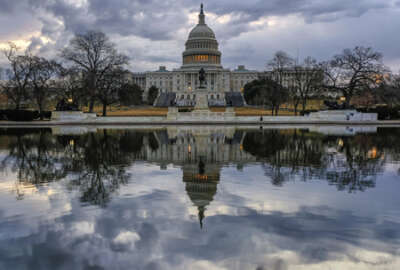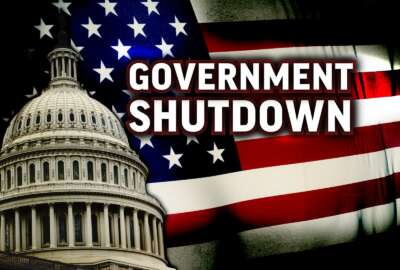
Q: What’s dumber than the last shutdown? A:The next one!
Monday was a crazy day for hundreds of thousands of federal workers, military personnel, government contractors and those who cover, feed and house them.
At the best of times, rush hour in the metro Washington, D.C. area — which has some of the worst traffic in the nation — runs from 5 a.m. to 7:30 p.m.
While we are not a manufacturing hub or home to many blue collar workers, we have lots of early risers. Many federal civilian and military folks have jobs that require an early start.
The Pentagon, Ft. Belvoir, National Security Agency and the National Institutes of Health have more people than many mid-sized cities. And lots of them start their commutes in the dark. Most Pentagon parking lots are full before 7 a.m., so the early bird gets the perch.
Monday was a little different. By most accounts the a.m. rush hour (mine for instance) was normal. If I hadn’t known the government was closed I wouldn’t have noticed any difference from any other Monday. Checking with colleagues here at FNR, who came in as early as 5 a.m., indicated the same thing: What shutdown?
But the afternoon was different because Uncle Sam does things a little bit differently. In many agencies, and for many jobs, shutdowns are more complicated than many nonfeds would think.
During a government shutdown you can’t just not come in. You have to first come in, and then leave. Before you can be shut down — told to stay home until further notice — you must first come to work to officially close out, sign off computers, leave voice and e-mail messages and THEN go home.
If things were normal (always a relative term here), feds designated as nonessential or non-emergency would come to work, do stuff, then turn around and leave ASAP. Although Congress appeared to be moving toward cancelling the shutdown, many early-arrival employees would have to go through this drill anyhow: Come into work, shut down and head home before they got the word that the shutdown was off. If it was.
So the afternoon commute for many people was easy. When those of us who aren’t federal workers or contractors, going home at the usual time meant that many others, the “shutdowners,” were already home.
Now that things are back to normal — at least for three weeks — pro-fed politicians are explaining why they voted to continue the shutdown even though they profess to hate them. Democrats and Republicans are each claiming victory which seems to be the point of most shutdowns.
Meantime people in federal centers around the country are watching the calendar to see if we are going to go through this again. Maybe for a more extended period. Or if maybe, just maybe, career politicians have learned that shutting it down — while they continue to get paid — is not the way to run a government.
What next? So what happened this time? And what’s likely to happen when Congress revisits the shutdown threat in February?
At 10 a.m. today on our Your Turn radio show, Greg Stanford from the Federal Managers Association will talk about what led to the shutdown and the quick resolution and what’s likely to happen in the next three weeks.
Nearly Useless Factoid
Contrary to popular belief, George Washington Carver did not invent peanut butter. The Aztecs may have used peanut paste as a toothache remedy, while Marcellus Gilmore Edson of Montreal, Canada obtained a patent for peanut butter in 1884.
Source: Wikipedia
Copyright © 2025 Federal News Network. All rights reserved. This website is not intended for users located within the European Economic Area.
Mike Causey is senior correspondent for Federal News Network and writes his daily Federal Report column on federal employees’ pay, benefits and retirement.
Follow @mcauseyWFED





